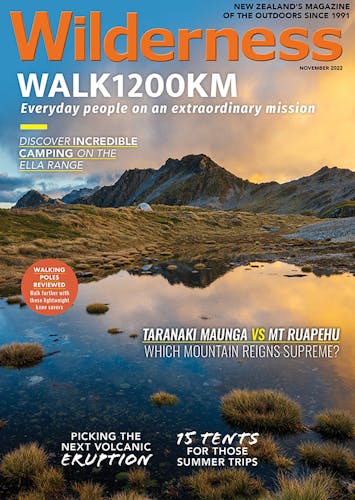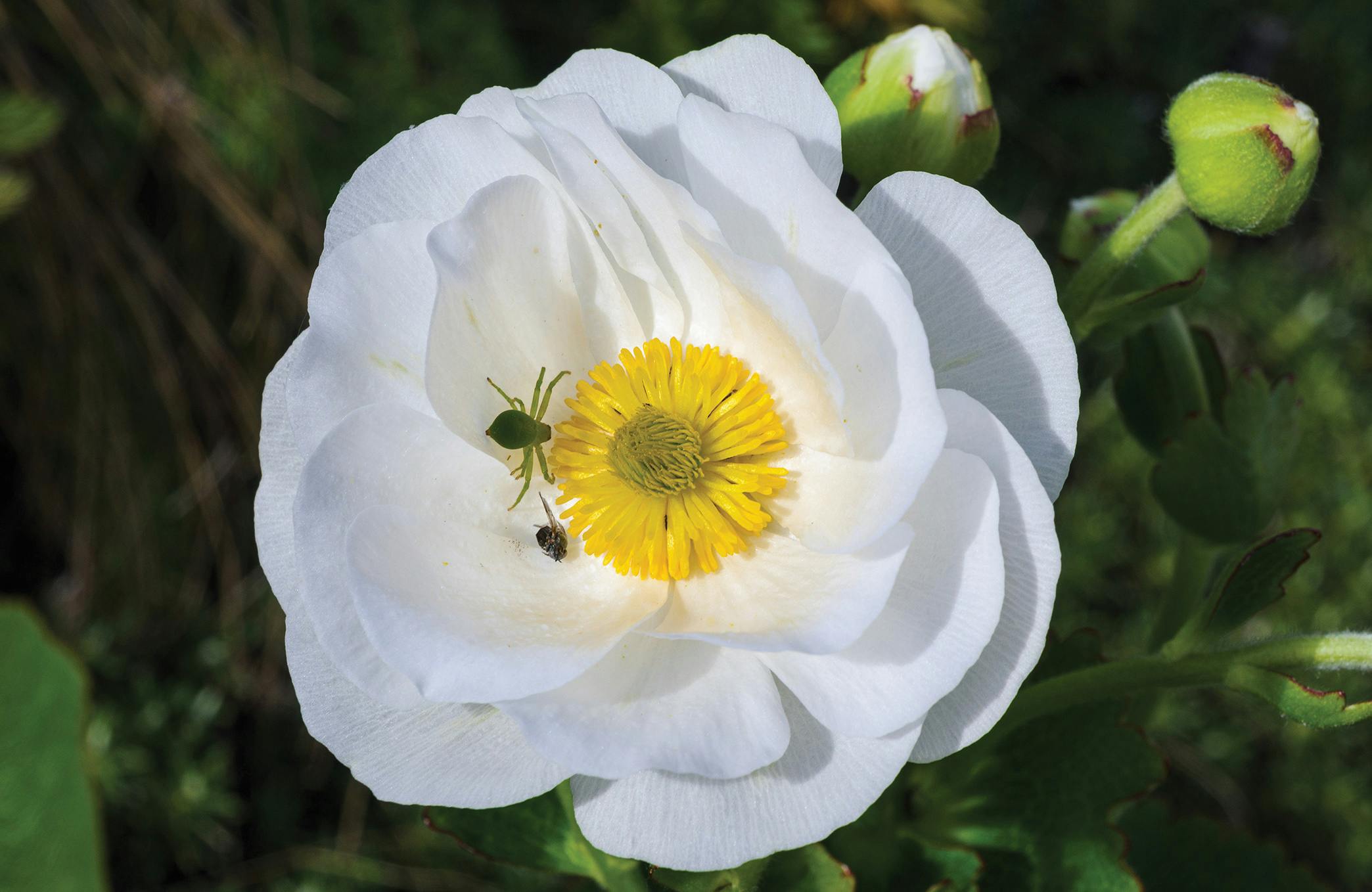Visit these five locations to see one of New Zealand’s most spectacular alpine plants in flower.
It’s spring and the flowering season for alpine plants is fast approaching. One of the earliest plants to flower, and arguably the most spectacular, is the Mount Cook buttercup. A striking plant with large green-marbled leaves and bold white flowers, it was known for decades as the ‘Mount Cook lily’ – despite being neither a lily nor confined to the Mount Cook area. Ranunculus lyallii was named after naturalist David Lyall, who served as the surgeon aboard the Acheron, which surveyed New Zealand’s coastline between 1848 and 1850. Lyall described a specimen he collected in Fiordland, but only the leaves, as it was not in flower.
A decade later scientists Julius von Haast and Andrew Sinclair made the first European description of its magnificent blooms when they explored the upper Rangitātā.
Perhaps no one has described the Mount Cook buttercup better than E.C. Richards in the 1950s book Our New Zealand Trees and Flowers: ‘An exceedingly handsome plant, about three to four feet high, its smooth, leathery leaves, about 12 to 15 inches across, are kidney-shaped at first, later taking the form of a shield. The thick flower stalks form spray-like branching stems upon which open many white flowers three to five inches in diameter, rather resembling Japanese anemones.’
Mount Cook buttercups grow in many parts of Kā Tiritiri o te Moana / the Southern Alps, usually in alpine valleys or on the damper parts of passes and lower mountaintops. In valleys, the buttercup begins flowering as early as October and at higher altitudes continues as late as January. Although present on Rakiura, it’s uncommon.
Here are five tramping destinations where you may find it.
1 Goat Pass, Arthur’s Pass National Park
Goat Pass Hut is an excellent overnight destination, reached on a well-marked tramping track up the Mingha Valley. Mount Cook buttercups can be observed in the upper valley and on Goat Pass itself. Allow 5hr each way to the 20-bunk hut.
2 Brodrick Pass, Ruataniwha Conservation Park
Brodrick Pass straddles the Main Divide between the Huxley and Landsborough valleys and is a superb place to explore on a 3–4 day tramp. There are three huts on the track up the Huxley Valley: Monument, Huxley Forks and Brodrick (allow 8–10hr each way to Brodrick Hut). During November and early summer the route beyond the hut to Brodrick Pass is usually festooned with Mount Cook buttercups.
3 Hooker Valley, Aoraki Mount Cook National Park
While something of a cliché, a photograph of a flowering Mount Cook buttercup in the Hooker Valley, with Aoraki / Mt Cook soaring in the background, does make a fine image. The Hooker Valley track is an easy half-day walk on a well-graded and benched track and takes 1.5–2hr each way. (Note: after heavy rain the upper part of the track is closed.)
4 Welcome Flat and upper Copland Valley, Westland Tai Poutini National Park
Welcome Flat is famous for its hot pools and is a good base from which to explore the upper Copland Valley – home to many Mount Cook buttercups. Allow 6–8hr for the tramp to Welcome Flat Hut. Booking a two-night stay at the 31-bunk hut allows a full day to explore the upper valley.
5 Gertrude Valley, Fiordland National Park
The New Zealand Alpine Club’s Homer Hut is ideally positioned to explore Fiordland’s Darran Mountains. Starting beside the hut, the route up the Gertrude Valley begins gently, and during summer the tussock is fringed by Mount Cook buttercups. Allow a whole day to reach Gertrude Saddle and return, or merely a couple of hours to wander in the lower valley.








